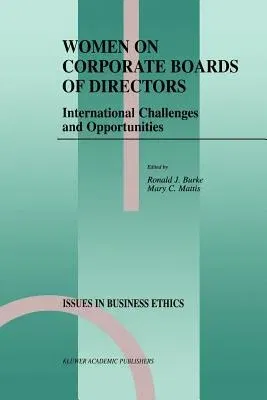Both the practitioner and academic communities have voiced strong
opinions regarding the progress of women in reaching the executive suite
and the corporate boardroom. Proponents on each side of the current
debate offer evidence suggesting the accuracy of their respective
positions. One view holds: "The fight is over. The battle is won. Women
are now accepted as outside directors in the preponderance of corporate
boardrooms" (Lear, 1994: 10). An alternative perspective, however,
suggests there is much progress left. An illustration of the type of
remaining barriers is provided by T. J. Rodgers, chief executive officer
(CEO) of Cypress Semiconductor Corp., who has commented that "a 'woman's
view' on how to run our semiconductor company does not help us"
(Rodgers, 1996: 14). Regardless of where one falls along the spectrum
anchored at one end by the view that women have made substantial
progress in reaching the upper echelons of corporations and anchored at
the other end by the view that women have barely begun to penetrate the
"inner sanctum" of corporations, the central issue is the extent to
which women have succeeded in cracking the proverbial "glass ceiling. "
The glass ceiling is a metaphorical barrier which prevents women from
attaining the upper-most organizational positions (e. g., Karr, 1991;
Morrison, White, Van Velsor, and the Center for Creative Leadership,
1992; Powell & Butterfield, 1994; U. S. Department of Labor, 1991).


